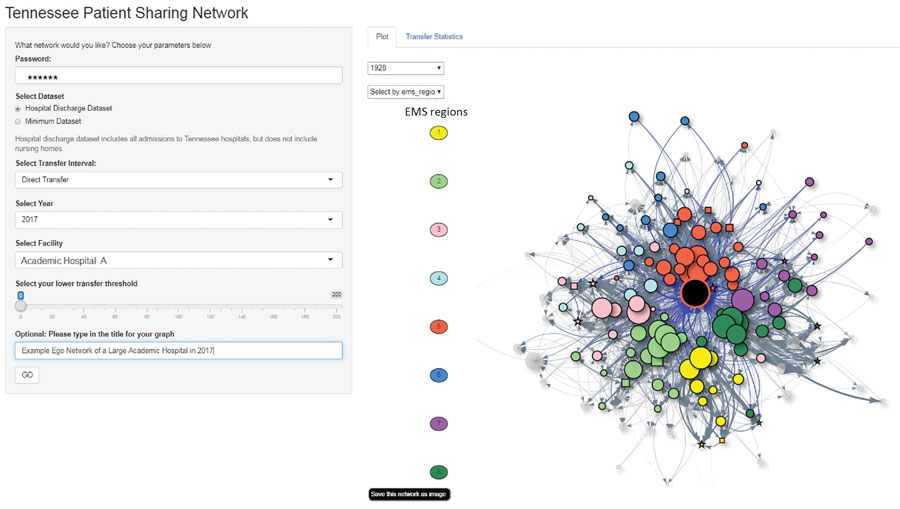Volume 26, Number 9—September 2020
Synopsis
Web-Based Interactive Tool to Identify Facilities at Risk of Receiving Patients with Multidrug-Resistant Organisms
Figure 2

Figure 2. Screenshot of the initial user interface and network graph visualization tab of the web-based application developed to identify healthcare facilities at risk of receiving patients with multidrug-resistant organisms. The application was designed using Shiny (R Studio Inc., https://www.rstudio.com). The network graph is visualized by using a force-directed layout. Black node in the center indicates the facility of interest (ego facility). Tennessee EMS regions are represented by the node color for connected facilities and is represented by the color of the node border for the ego facility. Users can change visualizations interactively during real-time use. EMS, Emergency Medical Services.
Page created: July 06, 2020
Page updated: August 18, 2020
Page reviewed: August 18, 2020
The conclusions, findings, and opinions expressed by authors contributing to this journal do not necessarily reflect the official position of the U.S. Department of Health and Human Services, the Public Health Service, the Centers for Disease Control and Prevention, or the authors' affiliated institutions. Use of trade names is for identification only and does not imply endorsement by any of the groups named above.